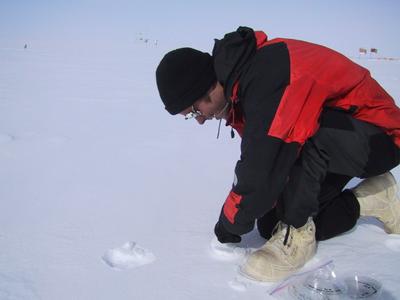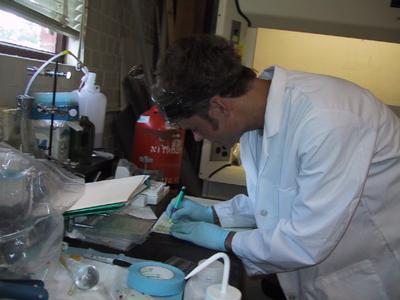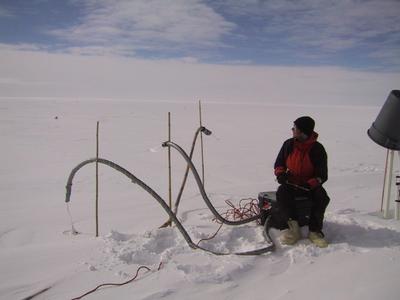
|
31 July, 2001A passion for snow - Markus Frey Why are we at this place? Why do we travel thousand of miles, to endure freezing temperatures and long days? Why do we build our own instruments? Suffer through setbacks? Try the same experiment 12 hours a day for a week? Collect and analyze millions of data points? Live without the comforts of home? It's the science and the scientists. Their passion is almost palpable. Everyone that is in these places with these people catches their fever. Before you know it, you too get excited about traces of gases in the snow or air. Suddenly, snowflakes are all interesting. You begin to speak of strange things like firn, hoar and rime. You begin to wonder about things like porosity, tortuosity and permeability. You see that there are infinite new ways to set up an experiment. New pieces of the puzzle to locate and place into the bigger picture. The excitement of answering questions, looking for clues and solving puzzles is definitely contagious. I certainly am finding it fun to be around such a passionate and courageous crowd. Markus Frey is one of the scientists I am working with this summer. A PhD candidate at the University of Arizona, Markus embodies the characteristics of an incredibly optimistic and resourceful scientist. He is constantly thinking of new twists to the snow search. He never rests; always some new idea, something to do some way to, as he says," feel the pulse of mother nature" with some experiment. I asked Markus to share with me some of his history and character in order that young people could have a chance to learn how one becomes such a person of fortitude and ability. Over a period of several weeks, between fixing things, cups of coffee and skiing together, here's what I have learned. Markus grew up in the Black Forest region of Germany. His family includes many scientists. Both parents and an uncle have pursued science careers. He has a sister who is in Medical school. Interestingly, Markus did not initially choose science. After attending a Jesuit high school, St Blasien, where he graduated in 1990, he spent two years in civil service in Mexico. When Markus returned to Germany, he attended University. At Albert - Ludwig Universitaet Freiburg, Markus studied many subjects including philosophy and history before realizing he did indeed love the questions and clues of science. In 1999, he completed his Master's level degree in Hydrology. His career and his outdoor interests were beginning to interlink. Watching Markus work here, I have observed that he is obviously comfortable in the out of doors. From the time he was young, he has skied in many of the back country regions of the Alps and is an accomplished mountaineer. He also enjoys photography, volley ball and salsa dancing. In 1999, he joined the team with the University of Arizona's hydrology department lead by Roger Bales and including Manuel Hutterli and Dee Belle - Oudry. Now living in Tucson, Arizona he pursues climbing, skiing in Flagstaff and volleyball, when he is not in the lab or on an expedition. Markus truly loves the mountains. He has made several expeditions to Bolivia to study the snow of the glaciers there. On these trips, he was at elevations in excess of 21,000 feet, carrying his equipment on his back, in order to analyze the snow and ice of the glaciers on Sajama and Ancojhuma. This is his second trip to Summit, Greenland. When I first met Markus in February of this year, he had just returned from several months of trekking across the West Antarctic ice sheet with the ITASE expedition. Eventually Markus will return to the mountains of Europe and South America, but for now he is madly chasing down pieces of the atmospheric chemistry puzzle. He will be returning to Antarctica in November for another trek across the ice sheet. Markus is part scientist, part inventor. He has built many of his own instruments and created new ways to ferret out traces of the atmosphere that will give him the solutions to his questions. He has never ending optimism. Tomorrow will bring him more clues, his machines and instruments will work. Each snowfall we have had here has been an opportunity to look at fresh snow, not a chance to dig out the sensors again. Like the other master scientists here, no day is too cloudy or too cold, no instrument can't be made to cooperate. Nothing gets in these guys ( and gals) way. It is the passion they feel, that sets them apart and brings them to these far out corners of the planet to look for clues. It certainly is a pleasure to be amongst the best.
Contact the TEA in the field at . If you cannot connect through your browser, copy the TEA's e-mail address in the "To:" line of your favorite e-mail package. |









